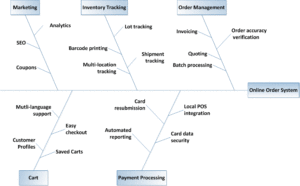 In our prior blog, The CASE for ECM, we shared about a client we are working with who did not have an ECM (Enterprise Content Management) platform and had a big content management problem. They utilized a disorganized shared drive to store documents but also, regularly printed hundreds of pages of documents needing approval or for sharing at board meetings. After looking at their regulatory compliance requirements, challenges with access to documents and information, and availability of resources (both manpower and hard dollar), we concluded that the business could clearly benefit from utilizing an ECM platform for their improving efficiency in their processes and for document retention. But which one? There are multiple ECM platforms out there and choosing the right one can be difficult without the advice of an expert. From the perspective of a business analyst, the first step to choosing the right ECM is to gather more information from key stakeholders about the most important processes to incorporate into this new system. Here is how that looked in this case.
In our prior blog, The CASE for ECM, we shared about a client we are working with who did not have an ECM (Enterprise Content Management) platform and had a big content management problem. They utilized a disorganized shared drive to store documents but also, regularly printed hundreds of pages of documents needing approval or for sharing at board meetings. After looking at their regulatory compliance requirements, challenges with access to documents and information, and availability of resources (both manpower and hard dollar), we concluded that the business could clearly benefit from utilizing an ECM platform for their improving efficiency in their processes and for document retention. But which one? There are multiple ECM platforms out there and choosing the right one can be difficult without the advice of an expert. From the perspective of a business analyst, the first step to choosing the right ECM is to gather more information from key stakeholders about the most important processes to incorporate into this new system. Here is how that looked in this case.
Identify VIP Processes
We started by identifying 10 processes to incorporate. We wanted to be sure that the entire company could take advantage of this new system so we were sure to include at least one process from each team in our top 10. One of the first processes we looked at was the hiring process. This process affects two teams, administration and human resources. We started by creating a process flow. This included identifying the documentation used in the process. We outlined the points in the process where a document was produced, printed, saved to the shared drive, emailed or touched in any way. To do this, we had to meet with the subject matter experts, the business drivers of that process and also with IT representatives.
Model the Processes to Identify Problems/Solutions
In our first meeting with the project stakeholders, we created a Business Objectives Model (BOM). Watch the 3 minute video above to learn more about this. Essentially, it’s a visual representation of what the problem is, a proposed solution and features, and how success would be measured. In this case, we used a feature tree diagram (example below) to demonstrate the main issues in the hiring process that the ECM platform would need to address.
 The first necessary part of the right ECM solution for this company was to created an automated approval process. The problem was that the various approvals needed to move a potential hire through the system were time sensitive. The old way of passing necessary documents along took too much time. Each person in the chain would review, sign off, and pass along to the next person in whatever way they were most comfortable. So, success for this automated approval process solution needed to allow for electronic signatures and to immediately pass the document on to the next approver.
The first necessary part of the right ECM solution for this company was to created an automated approval process. The problem was that the various approvals needed to move a potential hire through the system were time sensitive. The old way of passing necessary documents along took too much time. Each person in the chain would review, sign off, and pass along to the next person in whatever way they were most comfortable. So, success for this automated approval process solution needed to allow for electronic signatures and to immediately pass the document on to the next approver.
The next need was for a streamlined document retention system. Due to the regulatory audits the company faces, there is a mandated time frame for which documents needed to be stored and possibly accessed. The way the team was handling this was with a spreadsheet. The team would have to update the spreadsheet regularly as new documents were created and then they had to look back at previous years to find which documents were ready to be purged once the required time for storage had passed. This was very complicated and difficult to maintain because each type of document has a different storage requirement. For example, HR documents need to be kept for 3 years after the employee termination date, but other documents required longer (sometimes permanent) retention. Therefore, the new ECM system would need to store the documents in an easily accessible manner but also be able to alert users when the time required for storage was done. It would be even better if the system would auto purge documents that were no longer necessary as storage space can get costly very quickly when holding on to old data and documents.
Finally, the ECM system must solve the problem of multiple users uploading and saving documents and information. The best solution would use metadata to classify documents so that it was not user-dependent to get the search terms just right and make it accessible to others. Because people think differently than each other and than computers, this feature would allow for consistent classification of documents, allowing for others to search and find what they are looking for quickly.
Choose the Best Fit
After reviewing all of these problems and solutions, our analysts, along with the client, decided that M-Files was the perfect choice for this ECM implementation. We have written a detailed post on M-Files so check that out for further information. Having a business analyst lead the search for the perfect ECM is crucial to getting the right solution in place to improve efficiency, reduce cost and make sure the new system will allow users to get the job done.



